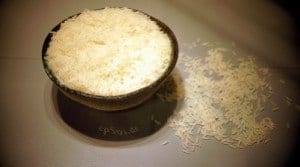
10% increase risk with every serving
According to a new study published on BMJ.com, white rice -a food used all over the world- has now been linked to increased risk of Type-2 diabetes.
Harvard School of Public Health researchers conducted a study to see if diabetes risk was higher with the increased consumption of white rice and if the link was greater for Asian populations where white rice is a staple to everyday dishes.
The study took diabetes-free participants in two Asian countries, Japan and China, and two western countries, the United States and Australia. The study found that, in one Asian group, the Chinese consumed about four portions of white rice daily, while Westerners consumed about five portions weekly.
The studies concluded that Type-2 diabetes increased by 10% with every additional serving of white rice, and a a greater link was found in women than men. The authors of the study published, “Higher white rice intake is associated with a significantly elevated risk of Type 2 diabetes,” in both Asian and Western cultures.
Although white rice is one culprit for diabetes, authors insist it is not the only. A general decrease in physical activity and increase consumption of food, in particular in Asian countries, could be responsible for the rise in obesity leading to Type-2 diabetes.
There are substitutions for white rice as well says one study author Qi Sun, a professor of medicine at the Harvard School of Public Health. “White rice also lacks nutrients like fiber and magnesium,” Sun stated, “People with high white rice consumption lack these beneficial nutrients and Asian populations consume a lot of white rice. If you consume brown rice instead, you will get these nutrients. There are alternatives.”















